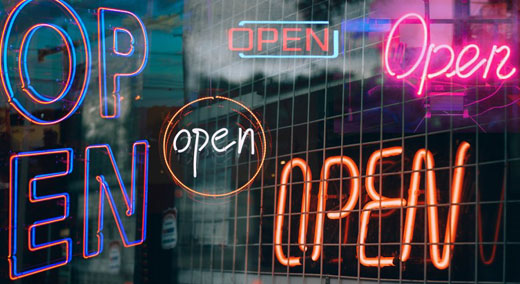FPI / June 9, 2020
Commentary by Jason Orestes
After demonizing small business owners wanting to reopen to support their families and sanctimoniously lecturing you for daring to want to return to the gym or the beach, Democratic politicians and their major media allies have been vocally supportive of literally millions of Americans partaking in protests that have often degenerated into riots and destruction for many small businesses that dutifully observed their state-mandated house arrest.

Apparently coronavirus can sense when you’re outdoors for noble, state-approved purposes and doesn’t propagate.
Americans aren’t stupid, and they’re observing the politically motivated “science” and charlatanic “expert” models that are selectively used to advance agendas of control over how people live their lives. The lockdowns are ending, and none of us should ever forget this hypocrisy.
Now it’s time to rebuild our economy.
You may have heard the term “V-shaped recovery” thrown around a lot, which is used by those who expect the U.S. economy to rapidly return to close to its normal output after its artificially induced economic coma is lifted. There’s no historical reference for a state-sanctioned economic collapse and recovery, and there’s been no shortage of predictions on what the recovery will look like and how fast it will arrive.
We received an extremely positive sign by way of a recent jobs report that showed unemployment data that was vastly better than anticipated. The U.S. is reopening, and we just regained 10 percent of the jobs lost to virus shutdowns. However, beyond the jobs, consumer data is pointing to a very strong recovery just waiting to be unleashed.
Consumers account for a whopping 70 percent of U.S. GDP, and their financial health will help us gauge what the recovery will look like. Despite all the “new normal” talk, there have been encouraging signs of activity that isn’t dominated by coronavirus fears, such as Shanghai Disneyland tickets selling out or Carnival Cruise bookings surging 600 percent for its reopening. But the most encouraging sign is how well off consumer finances have been throughout the quarantine.
Personal income often declines during a recession. However this is no ordinary recession, and Washington’s overwhelming response of quite literally spraying money everywhere has substantially helped mollify its impact. Unemployment is over 20 million and GDP will potentially fall by some 30 percent, and stunningly personal income is actually UP during the lockdown. According to the U.S. Bureau of Economic Analysis, personal income rose by $1.97 trillion (10.5 percent increase) and disposable personal income is up $2.13 trillion (12.9 percent increase). Absolutely unprecedented.
Paradoxically, people have been earning more unemployed than they were working. Additionally, the shutdowns have left people with growing incomes, but nowhere to spend it, producing another staggering figure: a 33 percent savings rate. This figure is without precedent, and not just for a recession, but EVER.
One of the difficult things about reviving an economy out of recession is weak demand. Typically people have been earning less, draining their savings, and that cycle is difficult to break, especially for such a consumer-driven economy as the U.S. However this is the antithesis of what we’re facing post-lockdown, as people emerge from a manufactured recession with more money than they had previously.
It’s not surprising the savings rate increased from the 8 percent rate it was prior, but a four-fold increase is unheard of. Pessimists who don’t think this portends huge demand waiting to be unleashed will attribute these figures to Americans saving more intentionally because they’re uncertain of their future earnings, and this high savings rate won’t result in elevated spending as America reopens. To that I say: the pessimist has been perpetually leveraging inaccurate models while decrying shortages of hospital beds, ventilators, PPE, and predicting high mortality rates, all of which never ended up happening. The consumer has been placed on house arrest, making more money than normal, and has a wallet full of cash to spend and is itching to go do so.
Additionally, the stock market is also expecting the U.S. recovery to be as strong as these numbers would suggest. The market has rallied over 40 percent off the year’s lows, with every major index now up on the year. Collective market wisdom is pricing in a bout of growth that looks like it will manifest. Bring on the V-shaped recovery.
Jason Orestes (@market_noises) is a former Wall Street financial analyst who focuses on contemporary political developments affecting economics, markets, and culture. His commentary can be found on Washington Examiner, TheStreet, MSN Money, RealClearMarkets, and RealClearPolitics.
FPI, Free Press International News Service
